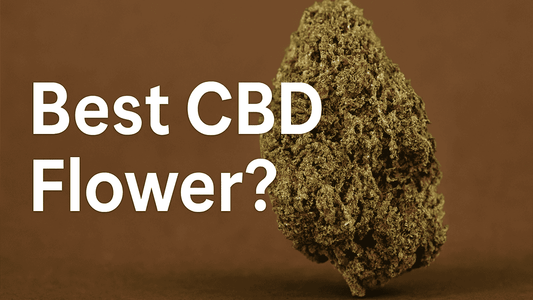One of the worst practices we've seen in the CBD industry is the act of 'spraying' CBD flowers to increase their potential value. CBD flowers are sprayed with chemicals to manipulate aromas and CBD potency and even add or remove THC.
The abundance of sprayed CBD flowers is worrying, as there are health risks involved in consuming some chemical agents. Furthermore, people should be able to enjoy and appreciate CBD flowers in their natural form. Rest assured, all the CBD flower we stock at Hemp Elf is either grown by us or our partners, who we vet for using organic practices. We always cure, dry and trim CBD crops at our facility to have complete oversight of the crucial final stages.
What Are Dodgy Vendors Spraying On CBD Flowers?

Hemp Elf and other reputable CBD vendors do not spray their flowers. However, some CBD vendors are carrying out this potentially dangerous practice. CBD flowers are typically sprayed to:
- Increase the aroma and flavour of CBD flowers
- Increase the CBD% of CBD flowers
- Increase the THC% of CBD flowers
- Decrease the THC% of CBD flowers
Spraying Terpenes Onto CBD Flower

Unethical vendors can manipulate the aroma and flavour of CBD flowers by spraying terpenes directly onto the flower. Terpenes are naturally found in all cannabis strains and are most known for their delicious flavours. For example, strains that smell and taste like lemons contain high quantities of terpene limonene.
Recent studies have shown that high terpenes concentrations can have a detrimental impact on our health. These added terpenes often come from inorganic sources. Instead, they are synthesised and often more intense than naturally found in cannabis.
Spraying CBD Isolate Onto CBD Flowers

It is widespread to spray powdered CBD isolate onto CBD flowers to increase their 'strength'. However, CBD isolate is a solid and must be turned into a liquid for it to be 'sprayed' onto CBD flowers. The act of liquidising CBD isolate usually involves a solvent, like acetone. Turning CBD isolate into a liquid is where things get very dangerous. Acetone is incredibly toxic to inhale and usually isn't purged entirely from the sprayed flower.
Spraying CBD flower goes against some of our most vital principles. Cannabis is best in its natural form. We prefer to show an honest representation of the potency of a particular CBD flower than manipulate its CBD %.
Spraying Delta 8 THC Onto CBD Flowers

Spraying delta 8 THC onto CBD flowers has become mainstream in the United States. Delta 8 THC is a form of THC made by performing 'isomerism' to CBD isolate. Isomerism rearranges the compounds in CBD to create a less potent form of THC. Technically, it is a synthetic form of THC, which does not naturally present itself in large quantities in cannabis.
Manufacturers spray delta 8 THC onto CBD flowers and first turn delta 8 into a liquid. They do this by mixing delta 8 THC with a solvent, like acetone, to make it easy to spray onto CBD flowers. However, medical studies have shown that acetone inhalation can cause cardiac arrest and death.
You may be asking, why are some vendors adding THC to CBD flowers? A legal delta 8 market in the United States has nurtured the emergence of these dangerous products. CBD flower vendors compete for the 'most potent' flowers; some believe they can trick their customers by using delta 8.
Spraying Acetone Onto CBD Flowers To Reduce THC %

Strict THC limits are one of the biggest hurdles in growing CBD flowers. In much of Europe, the legal THC limit for hemp cultivation is 0.2%. The crop will become illegal if the THC concentration increases beyond 0.2%. The term 'hot hemp' describes these plants that exceed the legal THC limit.
Some vendors spray their hot hemp with pure solvents, like acetone or alcohol, to reduce the THC limit and make it appear legal in lab tests. Solvents like acetone have the effect of stripping cannabinoids like CBD and THC from the plant. Not only does this reduce the excess THC, but it also removes CBD and other essential cannabis compounds like terpenes. Unfortunately, the sponge-like nature of cannabis flowers makes it very difficult for all the solvents to be purged. This process leaves behind residual solvents that can be toxic to consume.

 4.6 Rating. Excellent.
4.6 Rating. Excellent.






